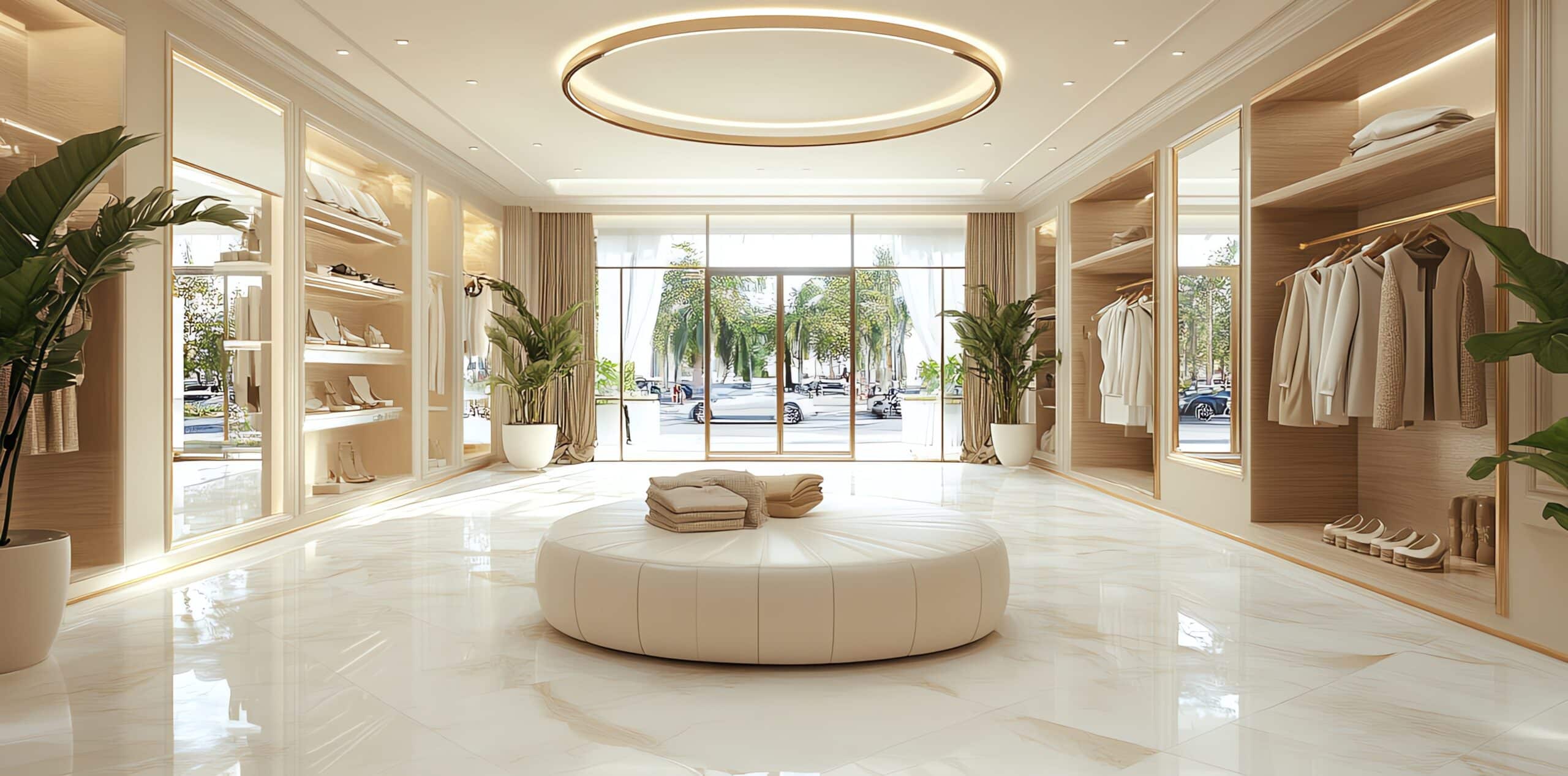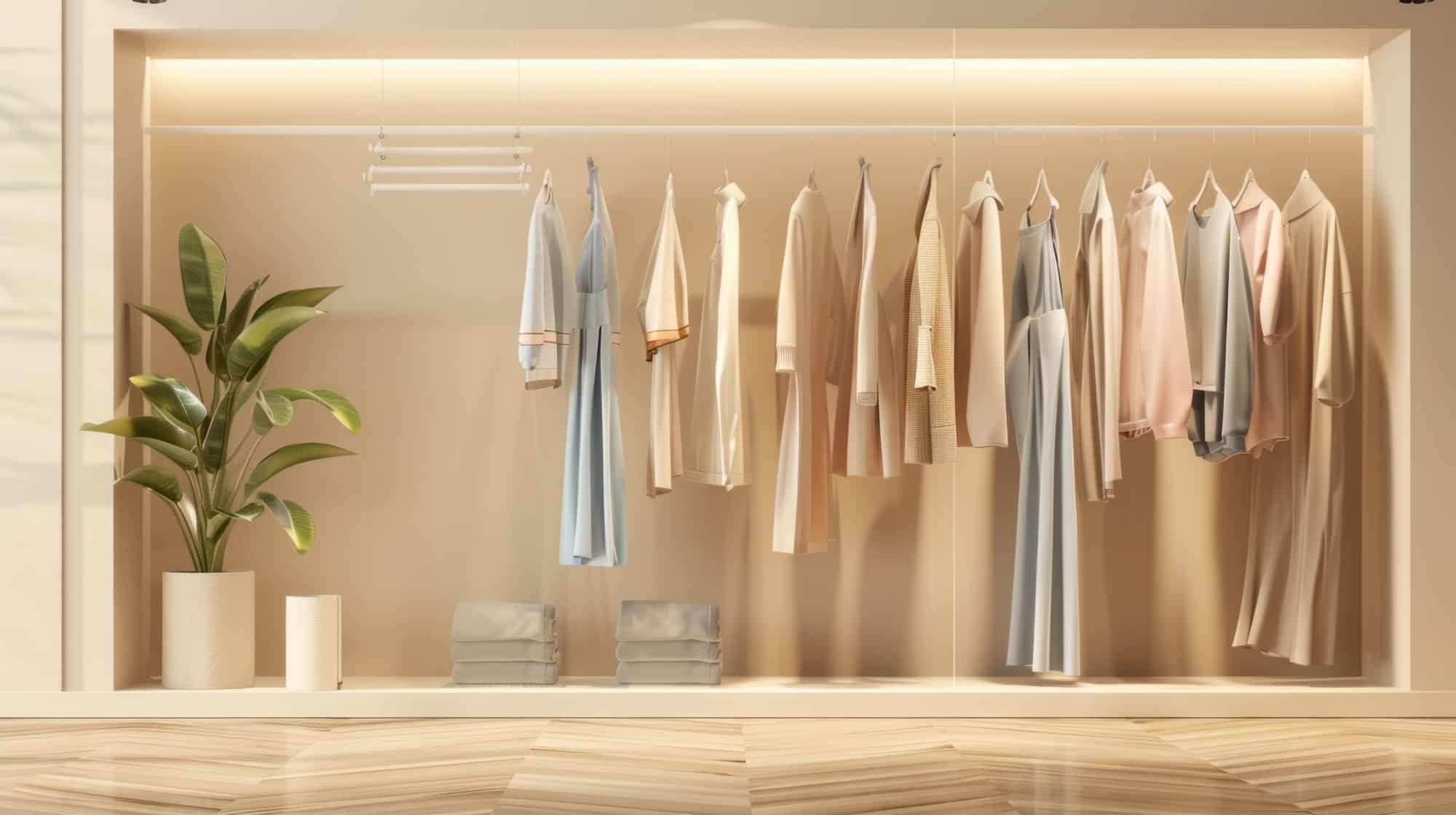
In the world of luxury retail, presentation is everything. From the moment a customer steps into a store, every detail of the environment must speak the language of the brand—sophisticated, intentional, and unforgettable. Behind every breathtaking display lies a story of precision engineering, design passion, and an unwavering commitment to perfection. These are not merely fixtures—they are immersive brand statements, designed to captivate, influence, and ultimately drive purchase decisions. In this article, we go behind the scenes of luxury retail displays to reveal the craftsmanship, innovation, and strategic thinking that transform a space into an experience—and elevate a brand from admired to iconic.
Transform your retail space with FELBRO Studios—where innovation, craftsmanship, and design converge. From custom point-of-purchase displays to immersive store environments, we deliver solutions that drive results. With decades of experience and a passion for excellence, we bring your vision to life. Let us help you capture attention, boost engagement, and enhance your brand’s presence. No matter your industry or scale, we tailor every detail to your unique needs. Connect with FELBRO Studios today, your trusted partner in retail display excellence.
👉Also Read: 15 Types of Visual Merchandising Displays That Will Drive Foot Traffic and Sales
The Essence of Precision in Retail Display Design

Precision in retail display design involves the meticulous coordination of form, function, and messaging to create environments that effectively engage consumers and support brand communication. It is not limited to accurate dimensions or material selection; rather, it encompasses the strategic alignment of visual, spatial, and sensory elements to influence shopper behavior and enhance product presentation.
At its core, precision begins with detailed planning. Designers must consider spatial constraints, customer flow, lighting conditions, and product dimensions to develop layouts that are both visually appealing and operationally efficient. Exact measurements and technical drawings are critical in ensuring that fixtures integrate seamlessly into diverse retail environments, whether in freestanding displays, end caps, gondolas, or window installations.
Material choice plays a significant role in precision design. Designers often work with a mix of substrates—such as metal, acrylic, wood, and glass—each selected for specific structural, aesthetic, and budgetary considerations. Integration of technologies like motion sensors, LED lighting, and interactive digital screens further enhances functionality, requiring careful calibration to maintain consistency and reliability.
Color schemes, typography, and brand graphics must be applied with consistency and accuracy to maintain brand integrity across multiple locations. Even minor discrepancies in hue, finish, or alignment can disrupt the shopper’s perception of professionalism and quality.
Furthermore, product placement within the display is guided by ergonomic and psychological principles. Items positioned at eye level, clear sightlines, and logical groupings based on category or use case help facilitate intuitive navigation and promote conversion.
👉Also Read: Top Trends in Retail Store Displays for 2025: Enhance Engagement and Sales
Passion for Craftsmanship in Custom Displays

In the realm of retail environments, the quality of craftsmanship significantly influences how customers perceive a brand. Craftsmanship in custom displays goes beyond assembly—it is a multifaceted process that combines design integrity, technical precision, and material excellence to create immersive, brand-aligned merchandising solutions.
At its core, craftsmanship is about the intentional, skilled execution of creative vision. In custom display production, this involves tailoring each component—whether a shelving fixture, signage system, or digital integration—to reflect the aesthetic, functional, and communicative needs of the brand. Retailers offering niche or high-end products often rely on such bespoke solutions to differentiate themselves in saturated markets, where visual distinction and brand authenticity are critical to consumer engagement.
The design and fabrication of custom POP displays (point-of-purchase) and window displays require collaboration between industrial designers, engineers, fabricators, and finish specialists. These professionals bring together diverse disciplines, using both traditional techniques and modern technologies such as CNC routing, laser cutting, and UV printing to produce finely detailed and structurally sound components.
Each phase of the process—from initial sketches and prototyping to finishing and installation—demands acute attention to detail. For example, the precise alignment of joints, the smooth integration of lighting elements, or the seamless application of brand graphics can greatly impact the visual coherence and professional appearance of a display.
Furthermore, custom displays must balance artistry with practical demands such as durability, safety, modularity, and ease of installation. Craftsmen must consider factors like weight load, customer interaction, and wear resistance, ensuring that each display not only looks exceptional but also performs reliably over time in a retail setting.
This passion for craftsmanship manifests in the smallest elements—fine joinery, high-quality finishes, hand-applied accents, and thoughtful spatial design. The outcome is a display that not only attracts attention but also supports merchandising goals by guiding customer behavior, elevating brand presence, and reinforcing product value.
Achieving Perfection: The Role of Visual Merchandising

Visual merchandising is a strategic discipline that involves the deliberate presentation of products to maximize brand visibility, attract target customers, and ultimately drive sales. In the context of luxury retail, achieving perfection in visual merchandising is essential to cultivate an exclusive and refined shopping atmosphere that aligns with the high expectations of discerning clientele.
At its core, visual merchandising functions as both an art and a science. It seeks to influence customer perceptions through carefully curated environments that elevate the brand narrative and stimulate consumer desire. The effectiveness of visual merchandising lies not only in the aesthetic appeal but also in how it facilitates an intuitive and memorable shopping journey.
Leading visual merchandising companies such as FELBRO Studios play a pivotal role in helping luxury brands realize this vision. By offering a blend of creative direction, technical precision, and market insight, these companies develop immersive retail experiences that reinforce brand positioning and customer loyalty.
A critical aspect of contemporary luxury visual merchandising is the adoption of minimalistic design principles. By employing clean lines, restrained color palettes—often dominated by neutral or monochromatic tones—and uncluttered layouts, luxury retailers create sophisticated spaces that draw focused attention to the products themselves. This deliberate simplicity fosters a sense of calm and exclusivity, allowing the merchandise to stand out as objects of desire rather than mere commodities.
Emerging technologies have further enhanced the capabilities of visual merchandising to engage and personalize the customer experience. Tools such as augmented reality (AR) enable shoppers to visualize products in different contexts or configurations, bridging the gap between digital convenience and in-store tactile engagement. Likewise, facial recognition systems and data analytics are increasingly used to tailor recommendations and promotions, providing individualized shopping experiences that resonate with customers on a deeper level and encourage brand loyalty.
A pivotal component of successful visual merchandising is storytelling through product displays. This approach transforms static presentations into dynamic narratives that communicate the brand’s heritage, values, and product innovations. Several key techniques are commonly employed:
- Sensory Integration: Incorporating sensory elements such as curated music, subtle fragrances, and textured materials enhances the immersive quality of the retail environment. These multi-sensory stimuli not only heighten emotional connections but also increase dwell time, encouraging exploration and purchase.
- Customized Window Displays: Window displays serve as the initial point of contact between the brand and potential customers. Luxury retailers meticulously design these displays to reflect seasonal themes, product launches, or brand campaigns, ensuring they resonate with the brand’s identity while capturing public attention.
- Targeted Audience Engagement: Tailoring displays to the preferences and behaviors of specific customer segments increases relevance and impact. This may include region-specific product assortments, culturally nuanced design elements, or age-appropriate styling, all aimed at creating a meaningful connection with the intended audience.
Ultimately, the overarching objective of visual merchandising in luxury retail is to evoke a sense of exclusivity and scarcity, psychological drivers that amplify customer desire and willingness to invest. This is achieved through the careful orchestration of spatial design, lighting, product arrangement, and interactive elements that communicate uniqueness and value.
Successful visual merchandising demands close collaboration across various organizational functions, including marketing, design, sales, and operations. This interdisciplinary approach fosters clear communication, aligns strategic goals, and results in cohesive design solutions that are both aesthetically compelling and commercially effective.
Attention to detail—ranging from material finishes to lighting angles—and the application of innovative technologies empower luxury retailers to craft displays that do more than showcase products. They create environments that embody the brand’s identity, inspire customers, and reinforce the exclusivity that defines the luxury retail experience.
👉Also Read: Decoding Luxury Retail Displays: Strategies to Capture Customer Attention
Tailored Solutions for Unique Needs
In today’s diverse and competitive retail landscape, standardized display solutions often fall short in addressing the specific requirements of individual brands and products. Tailored solutions in retail display design are essential to effectively meet these unique needs, enabling brands to distinguish themselves and communicate their identity with clarity and impact.
Custom retail displays are designed with a deep understanding of the brand’s values, target audience, and marketing objectives. This bespoke approach ensures that every element—from structural design and materials to colors and graphics—is carefully selected and crafted to resonate with the intended consumer base. Tailored solutions account for the unique characteristics of the product, whether it requires delicate handling, specialized lighting, or interactive features to engage shoppers.
One significant advantage of tailored display solutions is the ability to integrate brand storytelling seamlessly into the retail environment. Customized displays can incorporate thematic elements, visual motifs, and multimedia components that reflect the brand’s heritage and product narrative. This creates a cohesive and immersive experience that enhances brand recall and emotional connection.
Furthermore, tailored solutions offer flexibility to adapt to various retail contexts, including seasonal promotions, product launches, and limited-time events. This adaptability allows brands to maintain a fresh and relevant presence in-store, encouraging repeat visits and sustained consumer interest.
From a functional perspective, customized displays are engineered to optimize space utilization and customer flow within the store. They are designed not only for visual appeal but also for durability, ease of assembly, and maintenance, ensuring long-term usability and cost efficiency.
Incorporating innovative technologies such as digital signage, interactive touchpoints, and sensor-based lighting systems within tailored displays further elevates the customer experience. These technologies provide dynamic content updates and personalized interactions that can be modified to suit evolving marketing strategies and consumer trends.
The In-House Design Team: Bringing Ideas to Life
Collaboration with an in-house design team is essential for the successful conceptualization, engineering, and implementation of retail displays. At FELBRO Studios, our visual merchandisers and retail display engineering team in Los Angeles possess the expertise to plan, create, and install displays that enhance the retail environment while aligning precisely with brand identity and marketing objectives.
Effective project management plays a critical role throughout this process. By anticipating potential challenges early, optimizing resource allocation, and streamlining workflows, the team ensures that projects proceed smoothly, minimizing costs and avoiding delays. This proactive approach guarantees that display development progresses seamlessly from initial concept through to final installation, delivering exceptional results on schedule and within budget.
FELBRO Studios’ in-house design team stands at the forefront of innovation, consistently pushing the boundaries of retail design. Their close collaboration with client brands fosters a deep understanding of unique brand values and target audiences, allowing them to craft tailored solutions that resonate strongly with consumers. This partnership enables the translation of creative ideas into captivating, functional displays that engage customers and elevate brand presence.
Additionally, integrating FELBRO Studios’ design capabilities with large-scale production resources enhances the capacity to deliver customized displays on a broad scale. This synergy ensures that retail fixtures are not only visually compelling but also durable and practical for demanding retail environments.
Innovative Techniques in Display Manufacturing
The landscape of display manufacturing has evolved significantly, driven by advancements in technology and materials science. Modern techniques focus on enhancing both the aesthetic appeal and functional durability of retail displays, ensuring they effectively capture consumer attention while withstanding the rigors of high-traffic retail environments.
One of the key innovations is the integration of digital fabrication methods, such as CNC machining and 3D printing. These technologies allow for precise and intricate designs that were previously difficult or impossible to achieve through traditional manufacturing processes. CNC machining, in particular, provides accuracy and repeatability in cutting and shaping materials, which is essential for producing consistent, high-quality display components.
3D printing offers the flexibility to create complex geometries and rapid prototyping, accelerating the design iteration process and enabling customized solutions tailored to unique brand requirements. This results in faster turnaround times and the ability to experiment with innovative forms that enhance visual impact.
In addition to advanced fabrication, the use of sustainable and lightweight materials has become a focal point in modern display manufacturing. Materials such as recycled acrylics, biodegradable composites, and lightweight metals reduce environmental impact without compromising strength or durability. These materials also facilitate easier transportation and installation, which is critical for large-scale retail operations.
Furthermore, advanced surface finishing techniques, including UV printing, laser etching, and powder coating, contribute to the aesthetic refinement and longevity of displays. UV printing allows for vibrant, high-resolution graphics directly on display surfaces, while laser etching provides precise branding details and texture effects. Powder coating enhances surface durability, offering resistance to scratches, chemicals, and wear.
Automation and robotics are increasingly employed to streamline assembly and quality control processes. Automated systems improve production efficiency, reduce human error, and ensure uniformity across batches, which is vital for maintaining brand consistency across multiple retail locations.
Enhancing Brand Recognition Through Strategic Store Layouts
Strategically incorporating luxury items within the store layout can attract customers seeking high-margin products, thereby boosting overall sales performance. The use of detailed planograms ensures that product placement remains consistent and precise across multiple retail locations, reinforcing brand identity and optimizing merchandising effectiveness.
Technological advancements and thoughtful product placement contribute to an enhanced shopping experience in several key ways:
- Digital signage and augmented reality (AR) technologies offer immersive and interactive experiences, increasing customer engagement and retention.
- Positioning products at eye level strategically maximizes visibility and encourages customer interaction, leading to higher conversion rates.
- Live product demonstrations serve as powerful tools to engage customers, providing tactile experiences that often translate into increased sales.
Together, these strategies not only strengthen brand recognition but also elevate the overall shopping experience, creating an environment that encourages customer loyalty and drives purchase decisions.
The Importance of Quality and Durability
Selecting appropriate materials for retail displays is essential to ensure both longevity and structural resilience. Materials such as recycled PETG and Eco-board are increasingly preferred due to their exceptional durability combined with environmental sustainability. These substrates can endure repeated assembly and disassembly cycles without compromising their structural integrity, thereby preserving the display’s aesthetic and functional quality over time.
Additionally, materials like multilayer PVC provide an excellent strength-to-weight ratio, making them particularly suitable for large-scale displays that require both sturdiness and ease of handling. This unwavering commitment to quality and durability not only extends the useful life of retail displays but also reinforces the brand’s reputation for excellence and reliability in the marketplace.
Installation and Logistics: Ensuring Seamless Execution
Achieving precise and impactful retail displays demands meticulous planning and flawless execution throughout the installation process. An in-house design team plays a pivotal role in streamlining project timelines, significantly reducing turnaround times for new retail display deployments. Consistent attention to detail and strict adherence to schedules are essential to guarantee the successful installation of displays in retail environments.
Third-party logistics (3PL) providers are integral partners in this process, offering expertise in the creation, packaging, and assembly of retail displays to facilitate rapid and accurate setup at store locations. These logistics specialists employ specialized labeling systems and handling protocols to ensure that each component arrives correctly and can be efficiently assembled on-site.
Effective shipping logistics must be tailored to meet the unique demands of each retailer, ensuring timely delivery while minimizing the risk of delays that could result in costly penalties. Packaging design plays a dual role—protecting displays during transit while also contributing positively to the customer experience at the point of unboxing. Selecting materials that are lightweight and easy to handle can further reduce shipping expenses and labor costs, ultimately enhancing the overall efficiency of the distribution and installation process.
👉Also Read: Best Practices: How to Position POP Displays for Optimal Visibility and ROI
Ready to Transform Your Retail Environment with Precision-Crafted Displays?
At FELBRO Studios, we understand that exceptional retail displays are more than fixtures—they’re powerful brand ambassadors that drive customer engagement and sales performance. Our award-winning in-house design team combines decades of expertise with cutting-edge manufacturing techniques to deliver bespoke display solutions that perfectly align with your brand vision and commercial objectives.
From initial concept through seamless installation, we partner with luxury and high-street retailers alike to create memorable shopping experiences that convert browsers into buyers. Don’t let your products get lost in the crowd—elevate your brand presence with displays that demand attention and deliver results. Contact FELBRO Studios today at 925-586-6244 to discover how our tailored approach to retail display manufacturing can transform your merchandising strategy and accelerate your business growth.